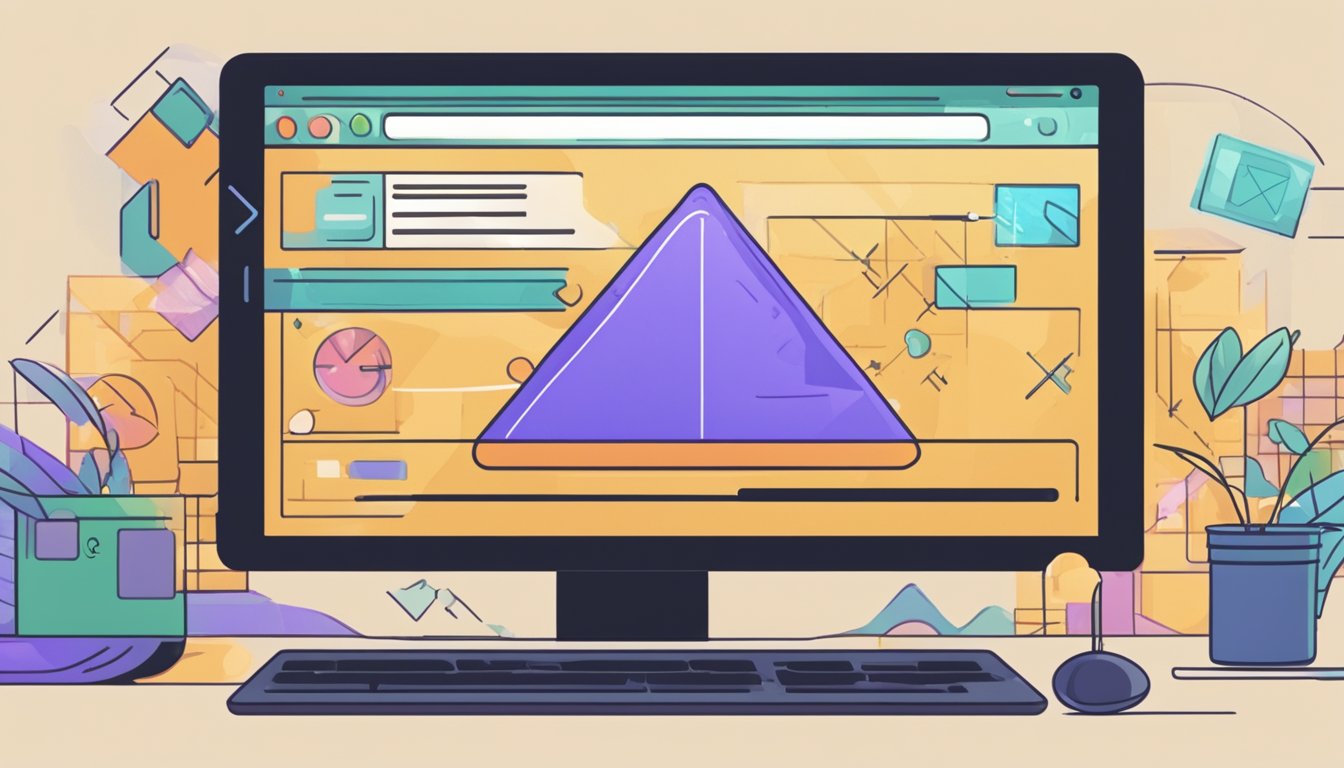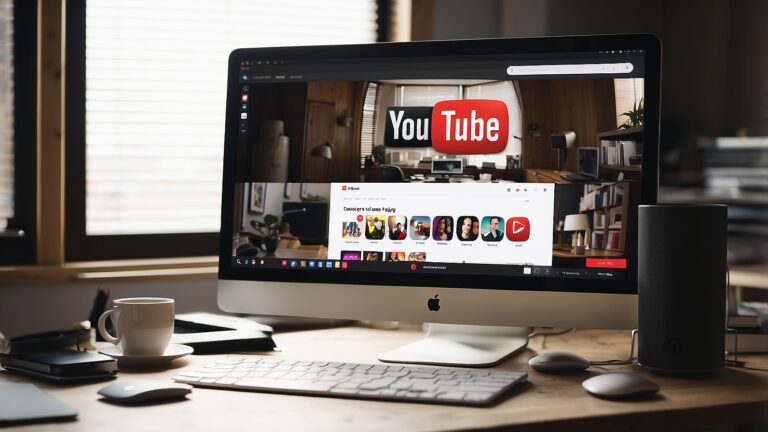YouTube clickbait techniques have become a popular way for content creators to drive traffic to their videos. Clickbait refers to the use of sensational and misleading headlines, thumbnails, and descriptions to entice viewers to click on a video. While some clickbait techniques can be seen as harmless marketing strategies, others can be manipulative and unethical.

Understanding clickbait on YouTube is crucial for both content creators and viewers. It is important to know how to create clickbait content that is engaging and informative without being manipulative. At the same time, viewers need to be aware of the potential risks of clickbait and how to avoid falling for misleading videos.
Creating clickbait content is not just about coming up with a catchy title or thumbnail. It also involves understanding the target audience, identifying what they are looking for, and delivering on their expectations. Analyzing the impact of clickbait and the ethical considerations surrounding it are also important factors in creating effective and responsible clickbait content.
Key Takeaways
- YouTube Clickbait Techniques are a popular technique used by YouTube content creators to drive traffic to their videos.
- Understanding clickbait and its potential risks is important for both content creators and viewers.
- Creating effective and responsible clickbait content involves understanding the target audience, delivering on their expectations, and considering the ethical implications of using clickbait.
Understanding Clickbait on YouTube
Defining Clickbait
Clickbait refers to content, such as headlines or thumbnails, that is designed to grab the viewer's attention and entice them to click on the video. The content is often misleading or exaggerated, and the purpose is to generate views and increase revenue for the creator. Clickbait is a common tactic used by content creators on YouTube to attract a large audience and increase their advertisement revenue.
History and Evolution
Clickbait has been around for a long time, but it has evolved with the rise of social media and video-sharing platforms like YouTube. In the early days of YouTube, clickbait was not as prevalent as it is today. However, as the platform grew and more content creators joined, clickbait became a popular way to attract viewers and increase revenue.
YouTube Clickbait Techniques
There are several clickbait techniques that content creators use on YouTube. One common technique is to use sensational or controversial headlines to grab the viewer's attention. Another technique is to use misleading or exaggerated thumbnails that do not accurately represent the content of the video. Some content creators also use clickbait in the video itself, such as promising a big reveal or shocking twist that never materializes.
Clickbait videos can have a negative impact on the user experience on YouTube. Viewers may feel misled or disappointed when the content does not live up to the hype, and this can lead to a loss of trust in the platform and the content creators. Additionally, clickbait videos can be frustrating to navigate, as viewers may have to sift through several misleading videos before finding the content they are looking for.
Overall, understanding clickbait on YouTube is important for both content creators and viewers. Content creators should strive to create engaging and informative content that accurately represents the video, while viewers should be aware of the tactics used by content creators and approach clickbait with a critical eye.
Creating Clickbait Content
Creating clickbait content is an art that requires a combination of creativity and strategy. Here are some techniques to help you create clickbait content that will capture your audience's attention.
Crafting Captivating Titles
The title of your video is the first thing viewers will see, so it's essential to make it attention-grabbing. A good title should be descriptive, intriguing, and concise. Use keywords that accurately describe your video and make sure it's clear what your video is about.
One technique to create a captivating title is to use numbers. For example, "10 Secrets to Improve Your Cooking Skills" or "5 Simple Exercises to Lose Weight Fast." Numbers help to break up the title and make it more visually appealing.
Another technique is to use emotional triggers. Titles that evoke curiosity, excitement, or fear tend to perform well. For instance, "You Won't Believe What Happened Next" or "The Scariest Haunted House Ever."
Designing Intriguing Thumbnails
The thumbnail of your video is the second thing viewers will see, so it's crucial to make it visually appealing. A good thumbnail should be high-quality, eye-catching, and relevant to your video.
One technique to create an intriguing thumbnail is to use contrasting colors. Bright colors tend to stand out and catch the viewer's attention. Another technique is to use close-up shots of faces or objects. This helps to create a personal connection with the viewer and makes them more likely to click on your video.
Writing Engaging Descriptions
The description of your video is where you can provide more information about your video and entice viewers to watch it. A good description should be informative, engaging, and optimized for search engines.
One technique to write an engaging description is to use bullet points. Bullet points help to break up the text and make it easier to read. Another technique is to use keywords that accurately describe your video and help it to rank higher in search results.
In summary, creating clickbait content requires a combination of creativity and strategy. By crafting captivating titles, designing intriguing thumbnails, and writing engaging descriptions, you can create clickbait content that will capture your audience's attention.
Youtube Clickbait Techniques: Analyzing Clickbait Impact

Clickbait is a marketing technique used to attract viewers to click on a video. Analyzing the impact of clickbait on YouTube can help creators and advertisers understand the effectiveness of this technique. In this section, we will discuss the impact of clickbait on viewership, engagement metrics, audience, and advertisement revenue.
Viewership and Engagement Metrics
Clickbait titles and thumbnails can increase the number of views on a video. However, this does not necessarily translate to increased engagement metrics, such as likes and comments. While clickbait may attract viewers, it can also lead to disappointment and dissatisfaction if the video does not deliver what was promised.
Clickbait's Effect on Audience
Clickbait can have a negative effect on a channel's audience if viewers feel misled or deceived. This can result in decreased trust and loyalty towards the channel and its creator. In addition, clickbait can attract a less targeted audience, which may not be interested in the channel's content. This can lead to a decrease in overall engagement metrics and advertisement revenue.
Advertisement Revenue Influence
Clickbait titles and thumbnails can attract viewers, which can lead to increased advertisement revenue. However, if viewers feel misled or deceived by the clickbait, they may be less likely to engage with the advertisements. In addition, clickbait can attract a less targeted audience, which may not be interested in the advertised products or services. This can lead to a decrease in advertisement revenue.
Overall, while clickbait may attract viewers and increase views, it can also have negative effects on engagement metrics, audience, and advertisement revenue. Creators and advertisers should carefully consider the impact of clickbait on their channels and campaigns.
Clickbait Detection and Prevention

Clickbait is a common technique used by YouTube creators to attract users to their videos. It is often misleading and can lead to disappointment among viewers. To prevent this, YouTube has implemented various techniques to detect and prevent clickbait.
Machine Learning in Detection
Machine learning techniques are often used to detect clickbait in YouTube videos. Researchers have developed models that analyze metadata such as video titles, descriptions, and thumbnails to determine if a video is clickbait. For example, a study by Peya Mowar et al. used ensemble learning to detect clickbait in YouTube videos with high accuracy [1]. The model analyzed video content, titles, and thumbnails to identify patterns associated with clickbait.
YouTube's Algorithmic Approach
YouTube's algorithm also plays a significant role in clickbait detection. The algorithm uses deep learning techniques to analyze user engagement with videos and identify patterns associated with clickbait. For example, if a video has a high click-through rate but low watch time, it may be identified as clickbait and demoted in search results.
User and Community Responses
YouTube also relies on user and community responses to identify clickbait. Users can report videos that they believe are misleading or deceptive, and YouTube's community guidelines prohibit clickbait. Additionally, YouTube's Creator Academy provides guidance on how to create engaging content without resorting to clickbait.
In conclusion, clickbait detection and prevention is a crucial aspect of YouTube's platform. Machine learning techniques, YouTube's algorithmic approach, and user and community responses all play a significant role in identifying and preventing clickbait. By working together, YouTube and its users can create a more transparent and trustworthy platform for all.
[1] Mowar, P., Jain, M., Goel, R., & Vishwakarma, D. K. (2021). Clickbait in YouTube Prevention, Detection and Analysis of the Bait using Ensemble Learning. arXiv preprint arXiv:2112.08611.
Machine Learning Models for Detection

Clickbait is a common problem on YouTube, and it can be difficult to detect. However, machine learning models have shown promise in identifying clickbait videos. Here are some of the most popular machine learning models used for clickbait detection:
Support Vector Machine (SVM)
SVM is a popular machine learning algorithm used for classification problems. It works by finding the best hyperplane that separates the data into different classes. SVM has been used successfully in clickbait detection by using features such as video titles, descriptions, and thumbnails. SVM has shown to be effective in identifying clickbait videos with high accuracy.
Random Forest and XGBoost
Random Forest and XGBoost are ensemble learning algorithms that use multiple decision trees to make predictions. They have been used in clickbait detection by combining different features such as video titles, descriptions, and thumbnails. These models have shown to be effective in identifying clickbait videos with high accuracy.
Neural Networks and Deep Learning
Neural Networks and Deep Learning are a family of machine learning algorithms that are inspired by the structure and function of the human brain. They have been used in clickbait detection by using features such as video titles, descriptions, and thumbnails. These models have shown to be effective in identifying clickbait videos with high accuracy. Some popular deep learning models used in clickbait detection include Recurrent Neural Networks (RNNs), Long Short-Term Memory (LSTM), Convolutional Neural Networks (CNN), and Natural Language Processing (NLP).
In conclusion, machine learning models have shown promise in detecting clickbait on YouTube. SVM, Random Forest, XGBoost, and Neural Networks have all been used successfully in clickbait detection. By combining different features such as video titles, descriptions, and thumbnails, these models can identify clickbait videos with high accuracy.
Ethical Considerations and User Trust

YouTube creators often use clickbait techniques to increase engagement, but they must also consider the ethical implications of their content. This section explores the ethical considerations and user trust when it comes to YouTube clickbait techniques.
Balancing Engagement and Credibility
One of the main ethical considerations for YouTube creators is balancing engagement with credibility. While clickbait titles and thumbnails can increase engagement, they can also mislead viewers and damage the creator's credibility. Creators must find a balance between creating engaging content and maintaining their credibility with their audience.
Combating Misinformation
Another ethical consideration for YouTube creators is combating misinformation. Clickbait titles and thumbnails can be used to spread fake news and misleading information. Creators must ensure that their content is factually accurate and not misleading to their audience.
User Profiling and Experience
User profiling is another ethical consideration for YouTube creators. Creators must consider the emotional impact their content may have on their audience. Clickbait titles and thumbnails can be used to manipulate users' emotions and create a false sense of urgency. Creators must ensure that their content is not deceptive and that users have a positive experience on their channel.
To summarize, YouTube creators must consider the ethical implications of their clickbait techniques. They must balance engagement with credibility, combat misinformation, and consider the emotional impact on their audience. By being transparent and creating quality content, creators can maintain the trust of their viewers and build a loyal following.



























